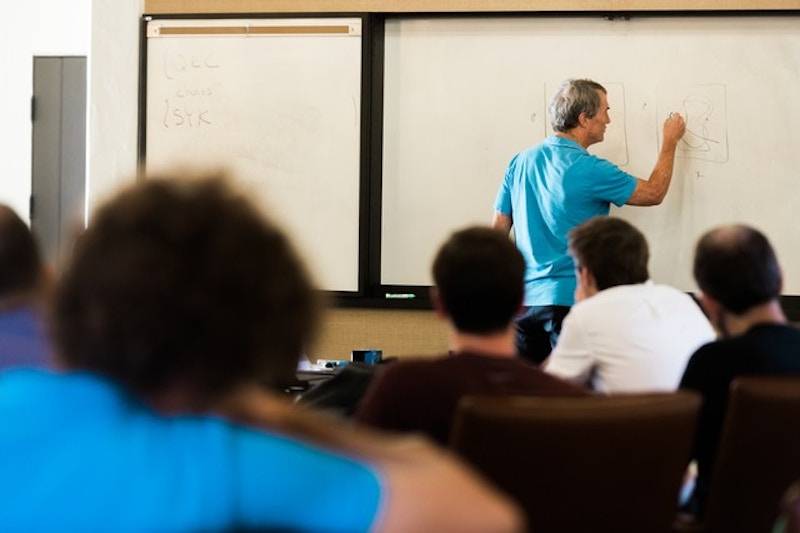
Using tensor networks to reconstruct bulk geometry from boundary states
Convener: Marolf
Participants: Aharonov, Balasubramanian, Hayden, Maloney, Maxfield, Myers, Pastawski, Polchinski, Swingle, Susskind, Takayanagi, Yoshida
Several years ago, a striking similarity was observed between the hyperbolic spatial geometry of anti-de Sitter space and the structure of tensor networks being used to represent the ground states of conformal field theories in numerical investigations. These MERA (Multiscale Entanglement Renormalization Ansatz) states are designed to faithfully support the entanglement of the CFT. Given the close connection between entanglement and geometry that has emerged since, the connection is natural. Whether the striking similarity can be elevated to a mathematical equivalence, however, remains unclear. We propose to explicitly construct the MERA representation of a CFT state with a holographic dual and thereby determine how faithfully it represents the geometry.
More specifically, we will develop a coarse-grained MERA network starting from the boundary state using the techniques of one-shot information theory, which governs compression and entanglement distillation in arbitrary quantum states. The first step of the argument will be to show that the one-shot quantities governing the operational information-theoretic quantities are well approximated by their von Neumann counterparts. Next, we will use the probabilistic method to construct optimal disentanglers.
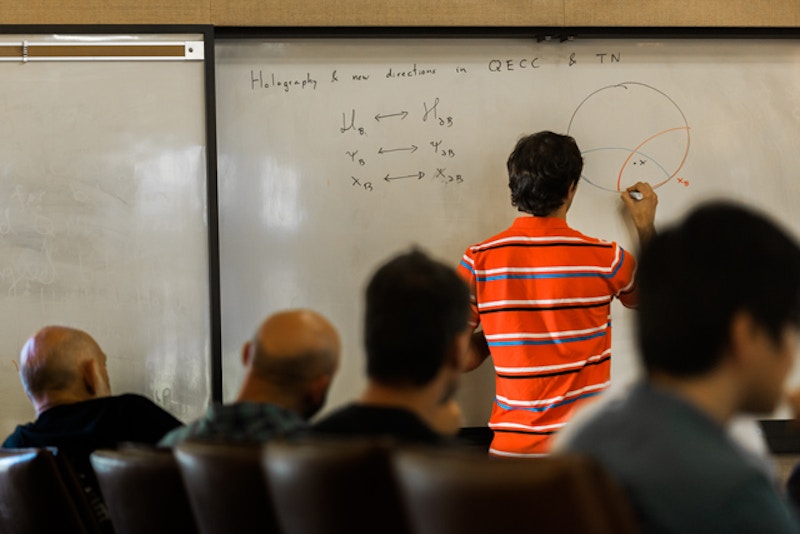
AdS/CFT and quantum error correction
Convener: Polchinski
Participants: Balasubramanian, Casini, Hayden, Maldacena, Myers, Pastawski, Preskill, Swingle, Susskind, Van Raamsdonk, Yoshida
Recently, Preskill and collaborators discovered how to relate error-correcting codes to the holographic properties of space. It has been suggested that the holographic encoding of bulk AdS space in the dual CFT has the form of a quantum error-correcting code, and tensor networks have been identified that implement such codes. This observation undoubtedly has deep implications for the holographic principle, and it may also offer new possibilities for applications to practical codes. This unexpected connection between gravity and (quantum) computer science is very new and it opens up many fundamental and practical questions. One urgent theoretical question is how bulk locality on smaller scales than the AdS radius of curvature emerges.
We will improve the construction to reflect more features of the full AdS/CFT correspondence, including extending it from the coarse network models to the continuum CFT. Additional issues to explore are the relation to gauge invariance and the inclusion of time dependence in the boundary and the bulk. We will also study information-theoretic implications of introducing a fixed non-dynamical conical singularity into the tensor network and, in particular, of the existence of a bulk region in such geometries that cannot be probed by minimal geodesics anchored at the boundary.
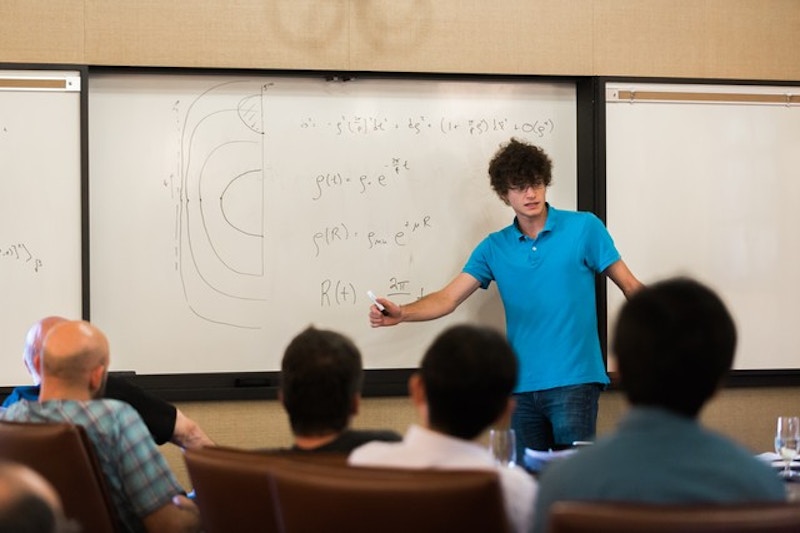
Chaos and the black hole horizon
Convener: Maldacena
Participants: Maloney, Oppenheim, Polchinski, Stanford, Susskind, Swingle, Yoshida
It has been a long-standing question to understand how the existence of the black hole horizon is reflected in the dual CFT. Recently, Shenker, Stanford, Kitaev, and Maldacena have provided a sharp answer: the chaotic (Lyapunov) behavior of the CFT is a direct reflection of the horizon geometry. Immediate goals are to understand the bulk interpretation of Kitaev’s random spin model and to find more conventional matrix-model examples. Of particular interest is the emergent approximate conformal symmetry in Kitaev’s model that governs the near-horizon geometry of near-extremal black holes. We propose to understand better the action of this symmetry. In principle, this symmetry should allow us to go behind the horizon.
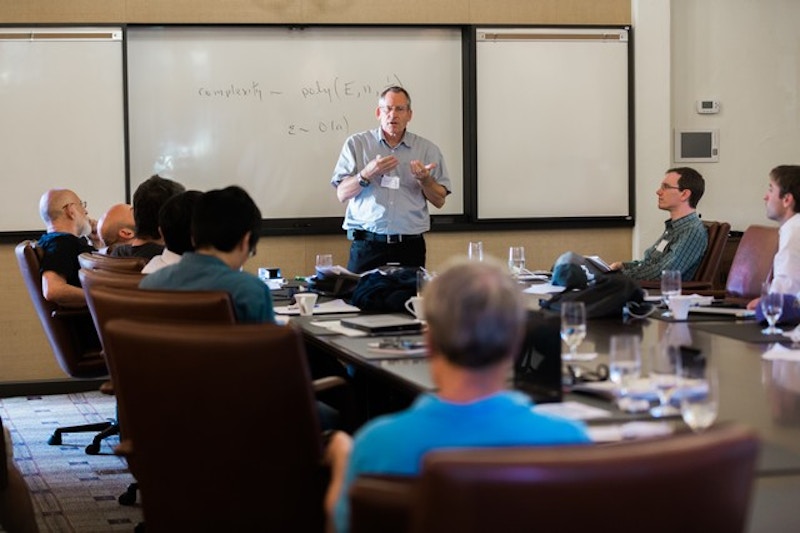
Operational interpretation of entanglement entropy in gauge field theories
Convener: Casini
Participants: Hayden, Headrick, Oppenheim, Pastawski, Preskill
Entanglement is one of the most important tools for classifying the behavior quantum field theories at short and long distances. In the case of gauge theories, it is also currently playing a major role in understanding the connectivity of space in holographic theories of quantum gravity. However, the definition of entanglement entropy has been found to be ambiguous in lattice gauge theories, depending on the details of how one assigns an algebra of observables to a spatial region. Moreover, the entanglement entropy is known to contain contributions that do not correspond to distillable entanglement because of selection rules. Algebraically, the situation is fairly well understood but the physical and information-theoretic interpretation of the mathematics remain obscure. We will address both questions: How much entanglement can be distilled? What is the interpretation of the rest of the entropy?
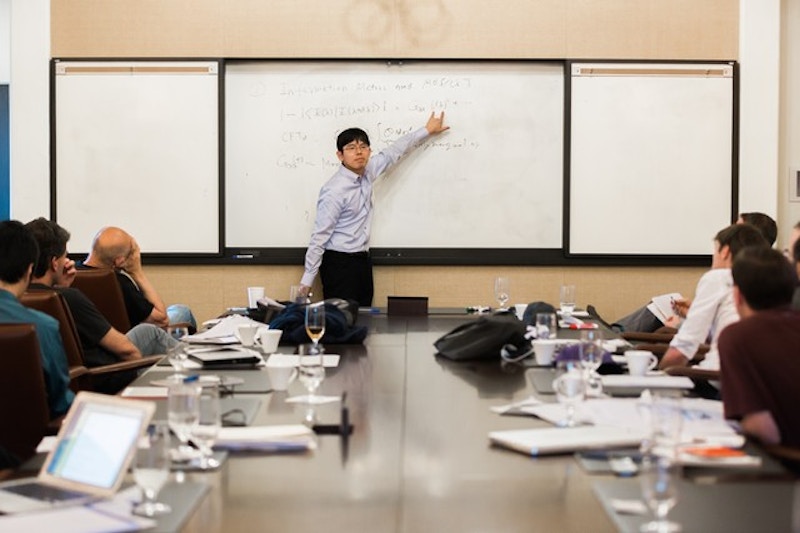
Constraints on gravitational spacetimes from entanglement inequalities
Convener: Van Raamsdonk
Participants: Headrick, Maloney, Marolf, Myers, Takayanagi
In the AdS/CFT correspondence, the geometry of spacetime is related to the entanglement structure in the dual field theory via the Ryu-Takayanagi formula. The entanglement structure obeys fundamental constraints, such as the strong subadditivity of entanglement entropy and the positivity and monotonicity of relative entropy. Using the correspondence, these should translate to fundamental constraints on the geometry of spacetime. Preliminary evidence suggests that these take the form of certain energy conditions. We will study these constraints as completely as possible. Moreover, similar relations are required by the hypothesis that QFTs should satisfy a quantum focusing condition. Their bulk implications will be studied as well, with holography being used as a tool to support or falsify this hypothesis.
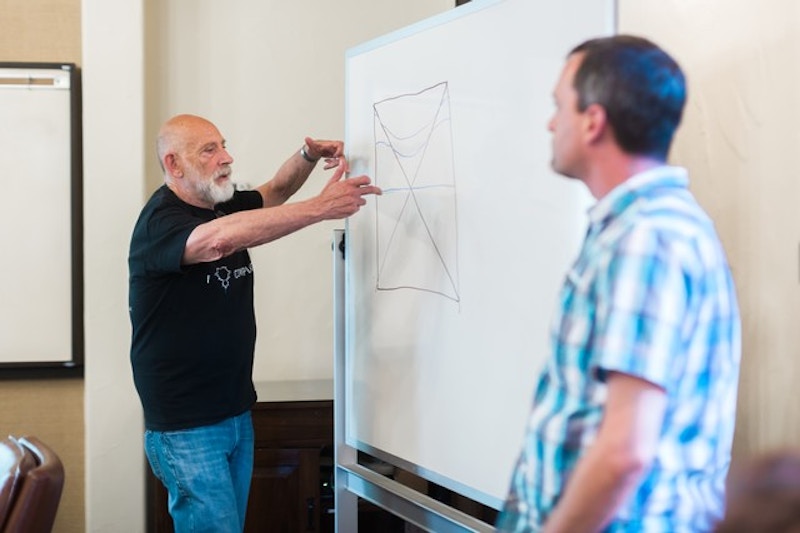
Multipartite entanglement in quantum field theory and gravity
Convener: Maloney
Participants: Balasubramanian, Headrick, Marolf, Maxfield, Susskind, Yoshida
Holographic dualities suggest that Einstein-Rosen bridges are manifestations of certain kinds of entanglement. However, this raises questions of consistency such as what happens to an Einstein-Rosen bridge when a measurement is performed at one end, thus breaking the entanglement. The answer involves multipartite, GHZ-type entanglement, rather than just entanglement between pairs of systems. Multipartite entanglement is much more complicated and poorly understood than the bipartite case. The connection between entanglement and geometry therefore offers a potentially powerful tool for making progress on a longstanding problem in quantum information theory. In holographic settings, there are indications that multipartite entanglement is intrinsically associated with matrix degrees of freedom and may be related to the detailed dynamics of the theory. The corresponding multipartite entanglement structures will be explored in tractable model CFTs that include free theories, the Ising model, and perhaps symmetric orbifolds.
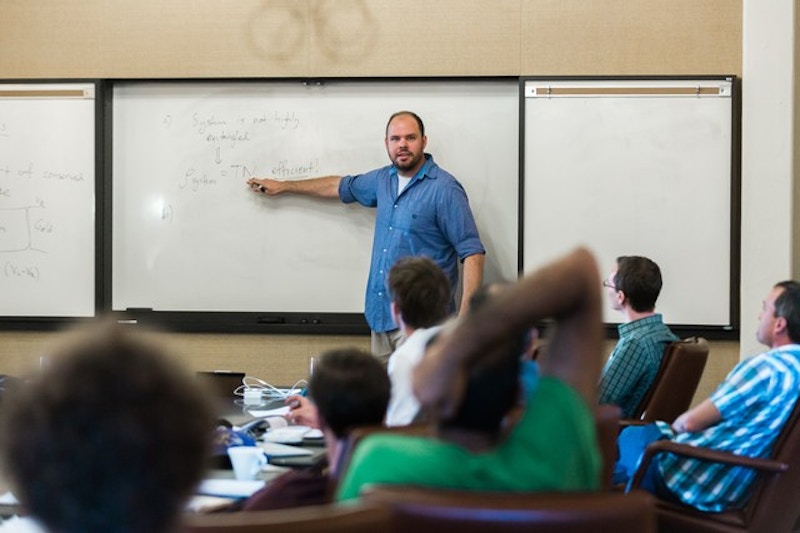
Circuit complexity and the validity of general relativity at late times
Convener: Susskind
Participants: Aaronson, Balasubramanian, Hayden, Maloney, Marolf, Maxfield, Pastawski, Swingle
Scrambling is the short-time manifestation of quantum chaos. The long-time manifestation is the growth of complexity. In black holes, it has been suggested that this growth is related to the growth of Einstein-Rosen bridges’ interiors. The growth is ultimately bounded exponentially by the finite size of the system, but no one knows how long the complexity actually increases and whether the bound is saturated. The answer to this governs the limits of classical geometry over very long time scales. Recently, Aaronson and Susskind have showed that the complexity really does become superpolynomial, assuming (1) the unitary implements a computationally universal cellular automaton, and (2) the complexity class PSPACE is not contained in PP/poly. This work opens up a striking connection between computational complexity and quantum gravity, and suggests numerous open problems. For example, what can we say about the complexity of approximately preparing the state? Also, is there a believable complexity assumption that implies that the complexity really increases linearly with time? This subject, at the interface of physics and CS, is in its infancy and we expect to pursue it vigorously.